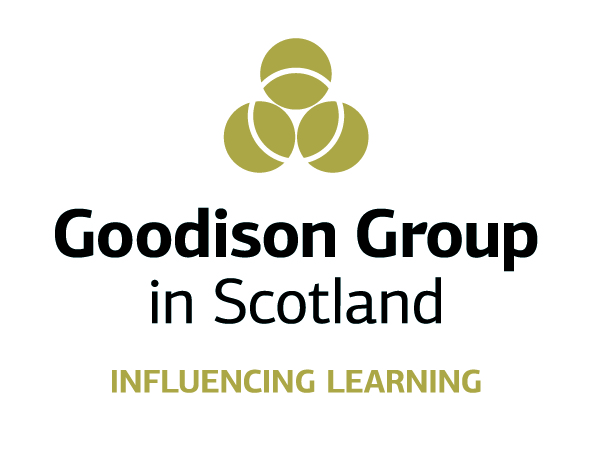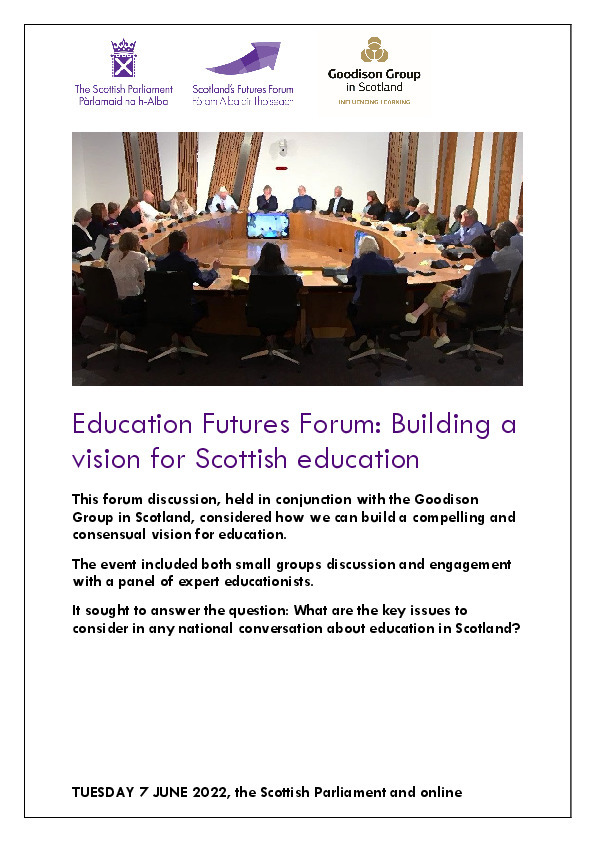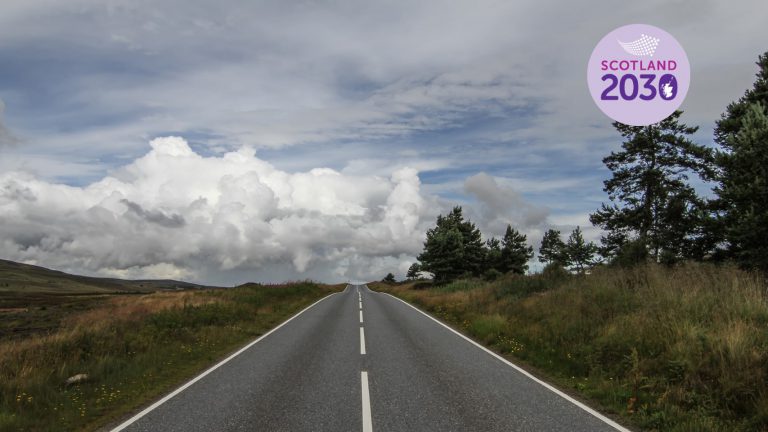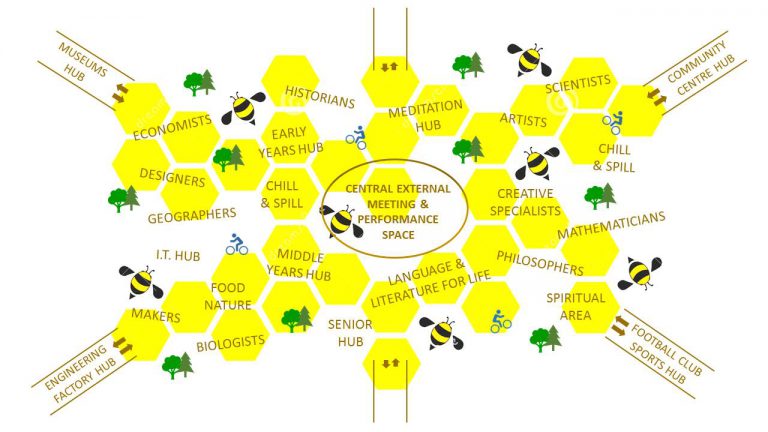Education Futures: Building a vision for Scottish education
Tuesday 7 June 2022, at the Scottish Parliament and online
Introduction
This forum discussion explored the topics or questions that could be included in the expected national conversation on Scottish education and/or inform the Goodison Group in Scotland programme for the next two to three years.
The event started with a short video featuring primary age pupils, who were supported by the Children’s Parliament to ask questions about what could be better in education. Beinn Grant MSYP of the Scottish Youth Parliament then contributed as convener of the SYP’s Education and Lifelong Learning Committee.
The key themes covered in those contributions were the purpose of education, rights and respect, trust, what and how children and young people learn, assessment and achievement.
An expert panel – Professors Graham Donaldson, Peter Higgins and Ken Muir – then shared their views and answered questions in an informal Q&A session with all participants. Following the open Q&A, participants worked in small groups to discuss the key issues for any national conversation.
The event, chaired by Sir Andrew Cubie, built on two seminars with the Education, Children and Young People Committee on how future changes will affect education.
The following report outlines the key points that emerged from a rich discussion. It has been produced by Rob Littlejohn of the Futures Forum and Tina Livingston from the Goodison Group in Scotland. Please note that it does not necessarily represent the views of all the participants.
Other resources
- Read Education Futures: Who should run Scotland’s schools? | Scotland’s Futures Forum (scotlandfutureforum.org)
- Read Education Futures: Classrooms of the Future | Scotland’s Futures Forum (scotlandfutureforum.org)
- Read “Putting Learners at the Centre: Towards a Future Vision for Scottish Education”.
- Read “Schooling, Education and Learning 2030 and Beyond” by Scotland’s Futures Forum and the Goodison Group in Scotland.
- Read “Support for Learning: All our Children and All their Potential”
Next steps
The debate affirmed the need for positive and engaging conversations about the future of education. Given the work of the Goodison Group in Scotland and the Futures Forum in education, there is a role for both organisations as a resource in any national conversation.
That might be by offering radical provocations, disruptive ideas and alternative thinking to what might be emerging. Both organisations wish to be enablers in producing challenging ideas to share with those who have a passion for opportunity and learning through life.
The next steps for our work will be agreed with that context in mind.
Reflections on the current context
The future is uncertain, and education is key
We live in a society which is being increasingly disrupted in ways that are not easily within our control. The war in Ukraine and the wider pressures on the economy probably mean that the money available for education (and other things) is likely to be constrained over the next few years.
Sustainability is vital, and technology will be both a friend and a potential source of risk. The impact of the pandemic also needs to be considered: how will that affect the needs and experiences of people in Scotland over the coming decade?
All this reinforces the notion that we need a fearless discussion about the purpose of education and then be prepared to think through the implications in a way that goes beyond mild adjustments. We need to be radical in answering the big questions, including about what should happen in education.
People spend about an eighth of their lives in formal education. How can these years be best used to ensure they thrive for the rest of their lives?
There is an appetite for a transformation in the education system
Practitioners – and teachers in particular – have been on their knees as a result of Covid in the last couple of years. This has been a national and global trauma. But there is optimism, and it would appear teachers are genuinely up for changing the education system.
If we ask children and young people, parents and practitioners what needs to change, they will be able to tell us. The challenge is to bring out the ideas for change in a constructive way and then feed them into policy. We have to build on what is already good and face the future to create an education system that is more proactive and forward looking.
The organisational restructuring of national agencies and the creation of an independent inspectorate is a good starting point. But, as it says in the “Putting Learners at the Centre“ report, much more needs to be done. Reforms must have an impact on children and young people, and not simply reprint existing organisations and structures.
Education policy divides people, but there is a huge amount that brings us together. We must try to create consensus on what to do and how to do it, in a way that endures.
There are key questions that remain unresolved
Curriculum
A key area of debate is the curriculum: its balance, the approach within it and the flexibility available.
Is the curriculum too restricted or is it not directed enough? Is it inclusive enough? There seems to be a sense of the tail (exams and assessment) wagging the dog. Is there too much emphasis on skills, and do we need more of a knowledge-based curriculum? The core of early years education is experiential learning, so should experiences be the driver of curriculum rather than skills or knowledge?
We need to personalise learning where possible so that it fits our children and young people. Schools are too rigid and still take a more industrial-era approach to education, whereas we should be delivering more practical and engaging lessons. Do we need a more vocational education system? Schools would not need to offer all the different pathways; partners could help with delivery.
Overall, what should the balance be between content and process within education? How do we build a responsive curriculum, and should this be the same at all stages of the learning journey?
Assessment
The current system of assessment does not work for everyone, and many young people do not believe that exams represent their abilities well. We need to create a fair assessment system that measures a student’s ability while incorporating the Curriculum for Excellence’s philosophy into senior years. For many, teacher judgements, coursework and portfolios should also make up a large portion of final grades.
It has been argued the current focus on exams does not support learning, especially for those who do not fit into typical academic models. Not every student is fantastic at mathematics or English and not everyone wants to be a lawyer or a doctor. How can we create a holistic education system that works for all of us?
Overall, we need parity of futures. Passing exams and going to university are not a destination in themselves. Education should be about learning, growing and ultimately being able to live independently, with a job, home and family, and contribute positively to society.
Children’s rights
All people, including children, have inherent rights: legally, socially and personally. Is our educational system equipped to embody the United Nations Convention on the Rights of the Child?
There are lots of expectations around the UNCRC, with people putting a lot of value on it. Is there a danger of a huge implementation gap between the expectation and what we see on the ground?
We should use the UNCRC as a driver for change and to put children and young people’s voices at the heart of our system. The OECD report in 2021 stated that, despite the Scottish Government’s directive to include children and young people in their education and have their voices heard, their voices are still not being heard in decision making across government.
What does it look like when we put children and young people at the heart of the conversation? What does that look like within government and policy decision making? What does it look like in a school setting and for a head or classroom teacher? How do we know that we have got it right?
There are trust issues in Scottish education
There is an inbuilt conservatism in the education system. This is natural because people do not want to take risks in ways that might damage children and young people. However, that tends to make us risk averse and we know that the best teaching and learning takes place when teachers and pupils feel involved, are empowered and have agency. Has accountability to national and government bodies, including the Scottish Parliament, gone too far? Can we leave more decisions to those at a local level?
A system built around trust has to be the way forward, and we need to rebuild that trust throughout the education system. How can we make that a reality when the public has lost trust and confidence in some parts of the education system? How can we develop trust in a system marked by high stakes accountability?
Pupils have been cited as saying that teachers respect them only when enter senior phase. Why is this? Why do some teachers find it difficult to listen to, respect and trust children?
Many teachers feel similarly in relation to their school, the local authority and the Scottish Government. Pioneers and innovators can be squashed in the system, and some teachers are afraid to experiment or be innovative. There is a constant worry about getting something right or getting into trouble. People who are innovative and creative do not get into trouble if they can show success, but it is a courageous road to take. How can we make innovation and experimentation the norm in the system?
Scottish education is set up to work for many but not all
Every individual is different. Every individual will have different learning capacities at different stages. As far as possible, education should be moulded round the young person, not the other way around.
The report on Support for Learning: All our Children and All their Potential by Angela Morgan dealt with the experience of children with additional support needs. The report and recommendations are not widely known, even though they were largely accepted by Scottish Government and COSLA. This reinforces the main conclusion that children who do not fit a standard model, and the professionals who work with them, are not valued and not visible.
The report made recommendations under a number of different themes, including measurement, workforce development and support, and relationships between schools and parents.
As noted, a coherent approach is needed: teacher recruitment, selection, education and professional development and learning processes must align with the changed and changing profile of children and young people in Scotland.
The most up-to-date Scottish Government statistics show that 32.3% of children in education have additional support needs. A third of a population is not a marginal group: if we make education work for those with most additional support needs, we can make it work for everyone.
Key questions for a national conversation
What is the purpose of the Scottish education system? What does success look like?
If we want a system that works for the future, not just the next two or three years, we need to discuss and agree on the purpose of Scottish education.
It was noted that, 20 years ago, the national debate on Scottish education that produced Curriculum for Excellence was followed by five or six years where there was a fair degree of unanimity and political consensus on the education system. Can we create that again? If so, we need to explore the following questions:
What is education for? What is the education system for? What are the key components and values that never change? Should the education system be set up to support learning from the cradle to grave?
What does success look like for the children and young people who go through it? What does it look like for the teachers, education leaders and politicians? What does it look like for society as a whole?
One idea is for a Scottish education “promise”. Could children, parents and society as a whole have a contract that outlines what the education system will deliver for and with them as a child, for and with them as a parent, and for and with society?
Article 29 of the UNCRC provides us with a clear framework of what education should be. Can it become the principal frame of reference and accountability?
Article 29 of the UN Convention of the Rights of the Child
1. States Parties agree that the education of the child shall be directed to: o The development of the child’s personality, talents and mental and physical abilities to their fullest potential. o The development of respect for human rights and fundamental freedoms, and for the principles enshrined in the Charter of the United Nations. o The development of respect for the child’s parents, his or her own cultural identity, language and values, for the national values of the country in which the child is living, the country from which he or she may originate, and for civilizations different from his or her own. o The preparation of the child for responsible life in a free society, in the spirit of understanding, peace, tolerance, equality of sexes, and friendship among all peoples, ethnic, national and religious groups and persons of indigenous origin. o The development of respect for the natural environment. 2. No part of the present article or Article 28 shall be construed so as to interfere with the liberty of individuals and bodies to establish and direct educational institutions, subject always to the observance of the principle set forth in paragraph 1 of the present article and to the requirements that the education given in such institutions shall conform to such minimum standards as may be laid down by the State.
How can we best assess the success?
Society understandably expects some kind of assessment of the outcomes from education. This is true of higher and further education institutions, employers, teachers, children and young people themselves, their families and society more widely, including politicians.
This assessment needs to be credible, accessible and reflective of the agreed purpose of education. It must be clear to everyone why and how any assessment is being done and how the information will be used to help children and young people take forward their learning.
The “Support for Learning” report made recommendations in this area in relation to children and young people with additional support needs that were echoed in the wider discussion. The report noted that existing qualifications are not relevant learning objectives for all children and young people, and those children and young people are not failures because of that.
Assessment must therefore value visibly the diverse range of achievements, including in vocational learning, that are possible for all children and young people. How can we follow this approach for everyone?
The review also referred to the need for an approach to assessment that is rooted in improvement methodology and designed to reinforce a culture of improvement rather than compliance. Crucially, it suggested that the main objective of measurement and recording will be to support local improvement rather than comparisons between authorities.
How can we devise a system of assessment that incentivises schools and local authorities to do the best for the children and young people in a wide range of outcomes, rather than competing purely on specific qualifications?
In any discussion of assessment, we must ask when we should measure achievement, as timing affects the usefulness of the information collected. For example, it was suggested that the attainment gap is, at root, a developmental gap that shows at age five, with a difference between some children of 13 months in vocabulary and 11 months in problem solving.
The only information collected on children’s development is a survey filled in by parents when the child is between 27 and 30 months. Given that the data that is collected on closing the attainment gap affects what happens throughout the system, should we not be collecting information on the developmental gap as early as possible? When and how else would it be best to capture information?
Learning is a human activity and experience and the outcome from it cannot just be numbers. There is also a rich narrative that must be covered. How can we do that in a way that gives confidence to those who need it?
How can we make the education system work for everyone?
Learners are increasingly diverse. As noted above, a third of the school population is defined as having additional support needs. Scotland is also becoming a more ethnically and racially diverse country. How do we make that diversity a strength of the system and ensure equity is built into approaches to learning and teaching?
We share a conviction that listening to children and young people will promote a better education system. So why do we not do this? How can we ensure that we do not just ask learners what they think about their experiences but actually give them ownership of design and implementation? This cannot be just in school but must happen in national agencies.
We need diverse journeys for learners. How can we create different routes through education and learning centred on individual needs? For example, is education obsessed with writing? What opportunities can new technology provide for those who communicate better in other ways?
How do we raise the aspirations of children and young people and ensure their learner journeys and career paths are not driven by lack of knowledge or outdated stereotypes? As recommended in the report on Learners’ views of computer science in Scottish schools, there can be a need to improve the gender balance by, for example, creating computing clubs specifically for young women and using more positive female examples in class. Visible diversity can only help break down barriers to achievement.
What if we focus on those who are “failing” or falling down the attainment or achievement scales? Can we suspend judgement and stay curious about why? Perhaps if we do we will see these pupils and their situation in a different light?
It was said more than once that, if we make education work for pupils with additional support needs, we will make it work for everyone. As the “Support for Learning” report made clear, schools and local authorities must work in partnership with parents and carers to develop and deliver ways of working together that support and promote positive relationships, communication and co-operation.
This must include clear pathways on transitions for children and young people with additional support needs, in the context of learning for life, allowing parents, carers, children, young people and professionals to be informed and supported at key transition points. Could we do the same for everyone?
For everyone to succeed, trust is key
A key part of any successful system is trust and, as noted above, there are trust issues within Scottish education. The best way of developing trust is for groups to spend time together. The more time they spend, the more opportunity they have to develop a relationship.
For example, class teachers in the early years and at primary level spend a lot of time with a particular group of children. This is not the case when it comes to the senior phase. As one participant shared, one of the most exhausting things to do is to sit beside a youngster in secondary education and experience their day.
We expect our young people to move from class to class, between often very different environments, and adjust to teachers who relate to their students in totally different ways. Long-term relationships are therefore vital for making sure that both teachers and learners develop the sense that they are working together.
The teacher/learner relationship is one example of where we need to continue to build trusting relationships. However, if we want the education system to work for everybody, we need to enable trusting relationships to be developed across all parts of the education system, including between Government and local authorities, local authorities and school leaders, and school leaders and classroom teachers.
What are the practical implications for the education system of a refreshed purpose?
If we take a long-term view of education and build it around a clear purpose, significant change is possible. Everything is potentially up for grabs: the location and design of buildings, the approach to teaching and teacher education, the grouping of pupils is it by age or stage – and more.
For reform that comes from a national conversation to work properly, however, the practical implications must be explored in that conversation. This leads to many fundamental questions; these are some of the questions and topics raised at the session.
Policy and Governance
Are schools really as important as we think they are? Should more focus be put on housing, public transport or clean environments to support learning?
How is the culture of the new national agency going to be supported and challenged to ensure it is supportive and focused on accountability?
What does an education system based around the UNCRC actually look like in the classroom, local authority chamber or parliamentary committee room?
What does flexibility mean for accountability to central agencies, the Scottish Government or the Scottish Parliament? Can our political system cope with the variety in education that giving people more flexibility would mean? Are we mature enough to handle a curriculum that is responsive not only to the children and young people involved but to the local context and local communities?
If we have a sense of purpose, pupil voice fits within a common endeavour as opposed to being seen as a series of one-off consultations. But that means adults giving up some of their power. What decisions should be taken at a different level?
How do we create a system of educational design that not only puts children’s and young people’s voices and experience at the heart of it but also allows them to hold policy and decision makers accountable? How do we make sure there is a feedback loop and great practice?
One feature of a more trusting system is that teachers have genuine empowerment and agency. What flexibility can we give local authorities, head teachers and classroom teachers?
How do we make sure everybody employed in the system is properly prepared for their role? How do we make sure the accountability mechanisms do the right thing and make a difference? How do we deal with power issues in the system? How do we make sure the right type and number of people are in our system?
School design, place and approaches
How do we ensure our school buildings are fit for purpose? Where should education settings be positioned? New school buildings are often on the edge of a town or village, but with changing high streets and the desire for 20-minute communities, could they be more central features of local life?
What does our approach to education mean for the use of technology? Many children and young people thrived during online learning: what does this mean for future planning? Equally, if education is about relationships, can people relate virtually in the same way as they do face to face?
Stages of education
Why do we organise education by age and not ability or outcome? Can we build a system in which the learner can drive their own learning?
Initial teacher education
What will need to change about initial teacher education? Can we develop teachers in a way that mimics the process that they that they are looking to deliver? Should there be far more emphasis on pedagogy and practice to prepare future teachers for creating a truly inclusive education system in Scotland?
Can we open up teaching opportunities to bring into education people with wider experience, albeit at the risk of a lack of educational education? In previous GGiS/Futures Forum reports, we have suggested developing a ‘para’ teacher role in line with the medical and legal professions.
Can we make placements in special needs schools and units available to student teachers?
Do we actually just need more adults who can support teachers in particular settings, such as in outdoor learning or creative practice? What long-standing links can be built with local communities or companies to offer learning experiences away from school settings?
Can we prepare children and young people to thrive in a world that is constantly evolving when educators themselves are not immersed in the world of work beyond their school’s contexts?
How can we make the change happen?
We need to avoid a gap between our ambitions and policies and what happens in reality. As noted above, to do this we need to build a vision that everyone can understand, even when they do not agree with it all. By exploring implementation, we will be able to weed out and be clear on compromise, challenges and change. Doing this openly will help build trust.
To support that mind shift and culture change, how do we address the influence of the media? There is clearly an interest in school league tables, for example, but how can the debate on achievement in schools be more informed and more nuanced.
Making the national conversation a success
Any national conversation has to be a positive one that builds on the many good things in Scottish education. How can we recognise and celebrate the good work and change that is already happening while exploring what needs to happen next?
The voices of children and young people need to be at the centre
There was universal agreement that children and young people must be key participants in the process, not viewed purely as the beneficiaries of reform. We must make the learner voice about design and implementation.
In doing so, we need to enable children and young people to explore what they want and explain that to others. How do they know and are they right? That is not to say that children and young people do not know what they want to be educated on; it is more that they are unused to being asked and, crucially, listened to.
This is a question for society, not just education
Given the importance of education to everyone in society, a truly national conversation is required. We need to get the whole of Scotland talking about the purpose of education and what that means.
It was not lost on the participants that the speakers were all white men of a certain age. A truly national conversation will gather the voices of those who are invisible, including children and young people with additional support needs, from minority backgrounds and from more deprived communities.
This also means bringing in people who might have different experiences, ideas, and understanding. People outwith mainstream education have valuable contributions to make, and they need to be heard.
The conversation also needs to be more nuanced than some public debates. A deliberative approach can avoid the binary debates we often see, bringing together a range of stakeholders and challenging each other positively. We need safe spaces to discuss governance and the roles of different stakeholders.
Everyone, especially those in power, needs to be challenged positively
The national conversation may not be an easy one to have. In fact, to make it work best, it cannot be an easy conversation, especially for those who have power in the system. Government ministers, politicians of all parties, local authority leaders and teaching unions will have to be challenged on their role.
Common threads coming through the debate were respect for all, flexibility and a need for choice. How do we therefore ensure the system is prepared to ask and properly discuss the difficult questions that need to be asked? All stakeholders need a genuine voice in what will be a discussion of culture and identity as much as structure and process.
For this, we will need facilitators who are outside the leading organisations and as neutral as possible. The Goodison Group in Scotland and Futures Forum approach of respectful but challenging discussion can be one model to follow. Both organisations would wish to play a full part in any national conversation.
Attendee list









